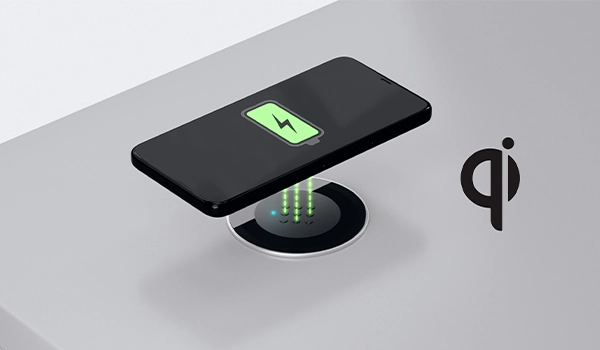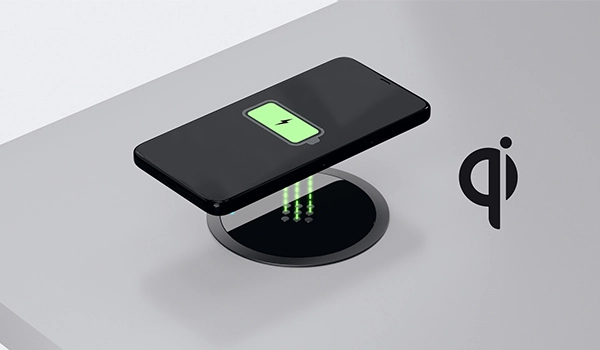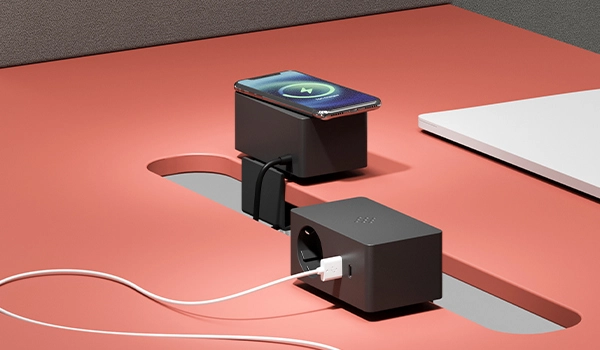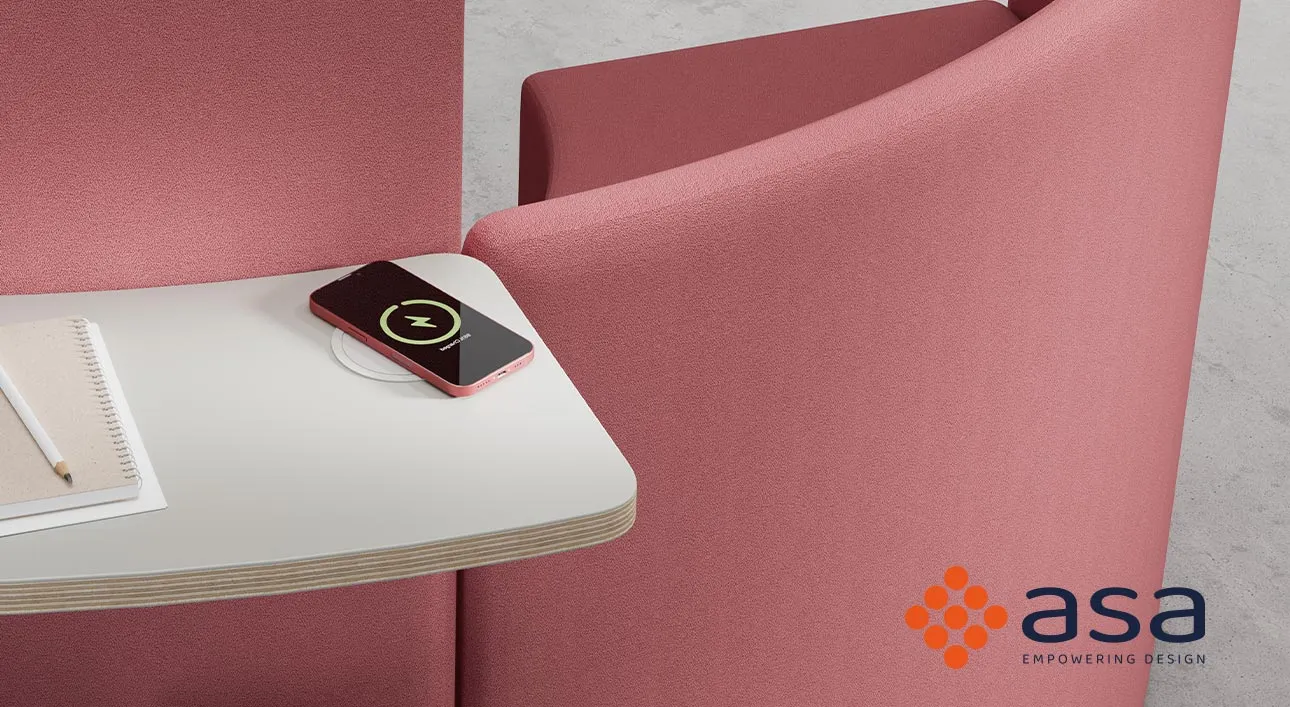Request information
For large buyers or companies it is possible to have price lists with different prices and payment terms.
Qi technology is one of the most remarkable innovations of recent years, offering a cable-free way to charge your devices.
Explore our guide to see how it works, which products are compatible, and the key benefits of wireless charging.
Qi technology is a groundbreaking innovation that powers wireless charging through electromagnetic induction, enabling devices to charge simply by touching a charging station.
At its core, magnetic induction allows energy to transfer seamlessly between a transmitter and a receiver, eliminating the need for cables.
Qi is universal and compatible across devices, meaning any Qi-enabled device can charge on any Qi charger, regardless of the brand.
This technology simplifies charging and adds versatility, freeing you from the hassle of dedicated cables.
Qi technology is now widely used in smartphones, smartwatches, and wireless earbuds, and it’s increasingly being integrated into furniture, vehicles, and public spaces—bringing wireless charging into more aspects of everyday life.
Wireless charging is a general term for transferring energy without cables, using technologies like magnetic induction or electromagnetic resonance. This can be achieved through various standards or protocols, including Qi, Powermat, and other proprietary systems.
Among these, Qi—developed by the Wireless Power Consortium (WPC)—is the most widely used and globally recognized standard.
Its broad adoption ensures compatibility between devices and chargers from different manufacturers.
Qi primarily uses electromagnetic induction to transfer energy, making it perfect for everyday devices. Its versatility has established it as a key player in the wireless charging ecosystem.
Qi wireless charging uses electromagnetic induction to transfer energy, enabling devices to charge without cables or physical connectors.
The system consists of two main components:
Here’s a simple step-by-step look at how it works:
Magnetic field generation: the Qi charging station, equipped with a coil, creates an alternating magnetic field when powered by electricity.
Energy transfer: when a compatible device—such as a smartphone, earbuds, or smartwatch—is placed on the charging base, a second coil inside the device captures the magnetic field from the transmitter.
Electromagnetic induction: the device’s coil converts the magnetic field into an electric current, which powers the internal battery.
Qi technology includes built-in communication between the transmitter and receiver to maximize efficiency, regulate temperature, and prevent overcharging or overheating.
The energy transfer occurs across a very short distance, requiring precise alignment of the coils for proper charging.
As noted earlier, any Qi-compatible device can charge on any Qi-enabled station, regardless of the brand.
Newer versions of the Qi standard also support fast charging, significantly reducing charging times.
Here’s a closer look at the key advantages of this innovative technology:
ASA Plastici offers a range of innovative solutions designed for seamless Qi-compatible wireless charging, perfect for both home and workplace environments.
Here are a few examples that combine style and functionality:



To get the most out of Qi wireless charging, follow these simple guidelines:
It’s important to check if your device supports Qi technology before charging. Refer to the user manual or product specifications to confirm compatibility.
In the case of smartphones or tablets, place the device on the charging pad, and it will start charging automatically. Some devices, like wireless earbuds, may require a bit more attention. Ensure they are properly placed in the designated spots on the charger. No additional setup is needed.
What if your device isn’t Qi-compatible? You can use an external receiver that connects to your device through a USB-C, micro USB, or Lightning port.
LEGGI ANCHE
USB Type-C socket: the future of data and power transmission
Qi2 is the next generation of the Qi standard, created to meet the growing demands for connectivity and sustainable solutions.
It isn’t just an upgrade—it’s a groundbreaking leap forward in wireless charging technology.
With support for triple the power of its predecessor, Qi2 boosts charging capacity from 5W to 15W, outperforming even top competitors.
Qi2 chargers also feature a magnetic system that ensures faster and more precise alignment with the charging base, significantly speeding up energy transfer.
This technology doesn’t just make charging simpler—it’s a step forward toward a more practical, connected, and sustainable future.
By blending innovation with convenience, Qi2 is transforming how we interact with technology in our daily lives. All ASA products are fully compatible with the Qi2 charging standard.
For large buyers or companies it is possible to have price lists with different prices and payment terms.
